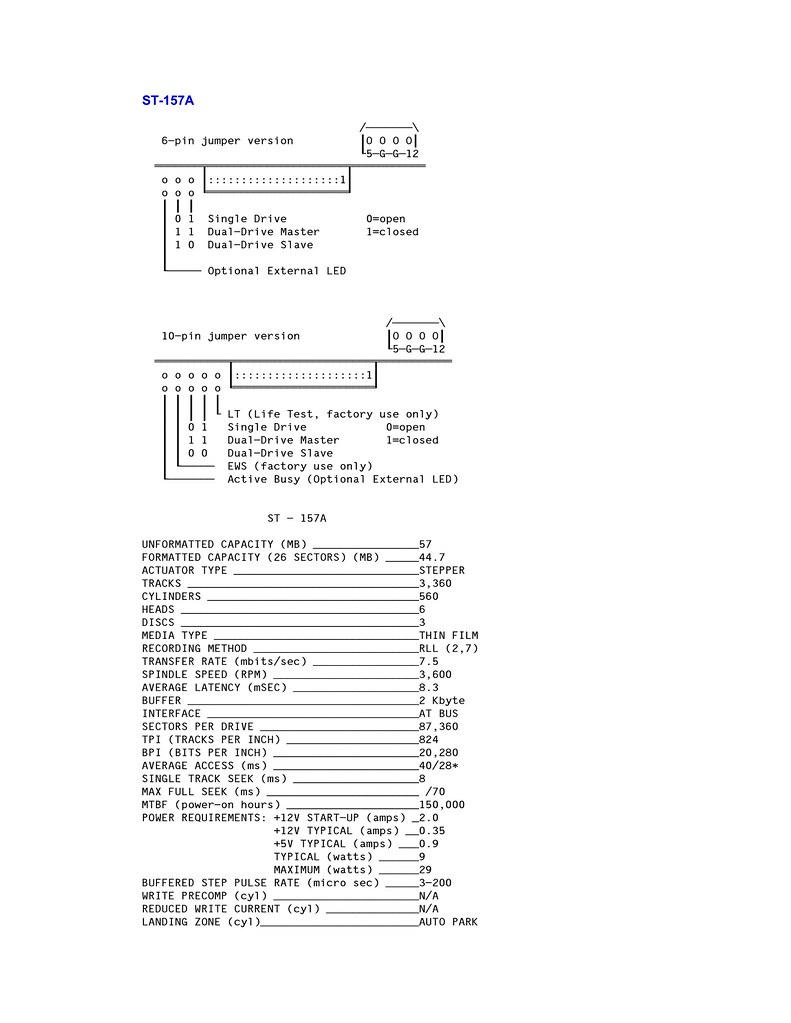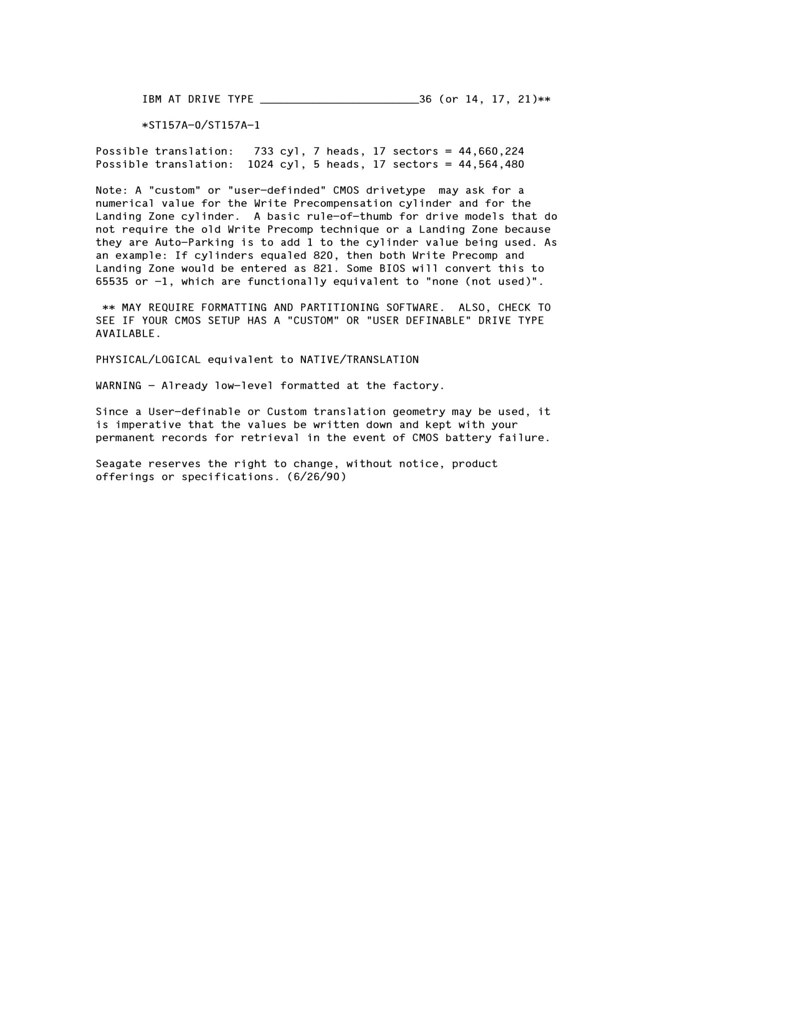bartman2589
Member
Not entirely true, if there are unused entries in the table you CAN add NEW entries, not necessarily an easy task but it is possible. However it would be much easier to just use a pre-existing entry and use drive overlay software.
Additionally I know that many old drives used to list alternate head/sector/cylinder settings that could be used to configure the drive for use in a system that does not necessarily have table entries that exactly correspond to the actual settings for the drive.
Additionally I know that many old drives used to list alternate head/sector/cylinder settings that could be used to configure the drive for use in a system that does not necessarily have table entries that exactly correspond to the actual settings for the drive.


